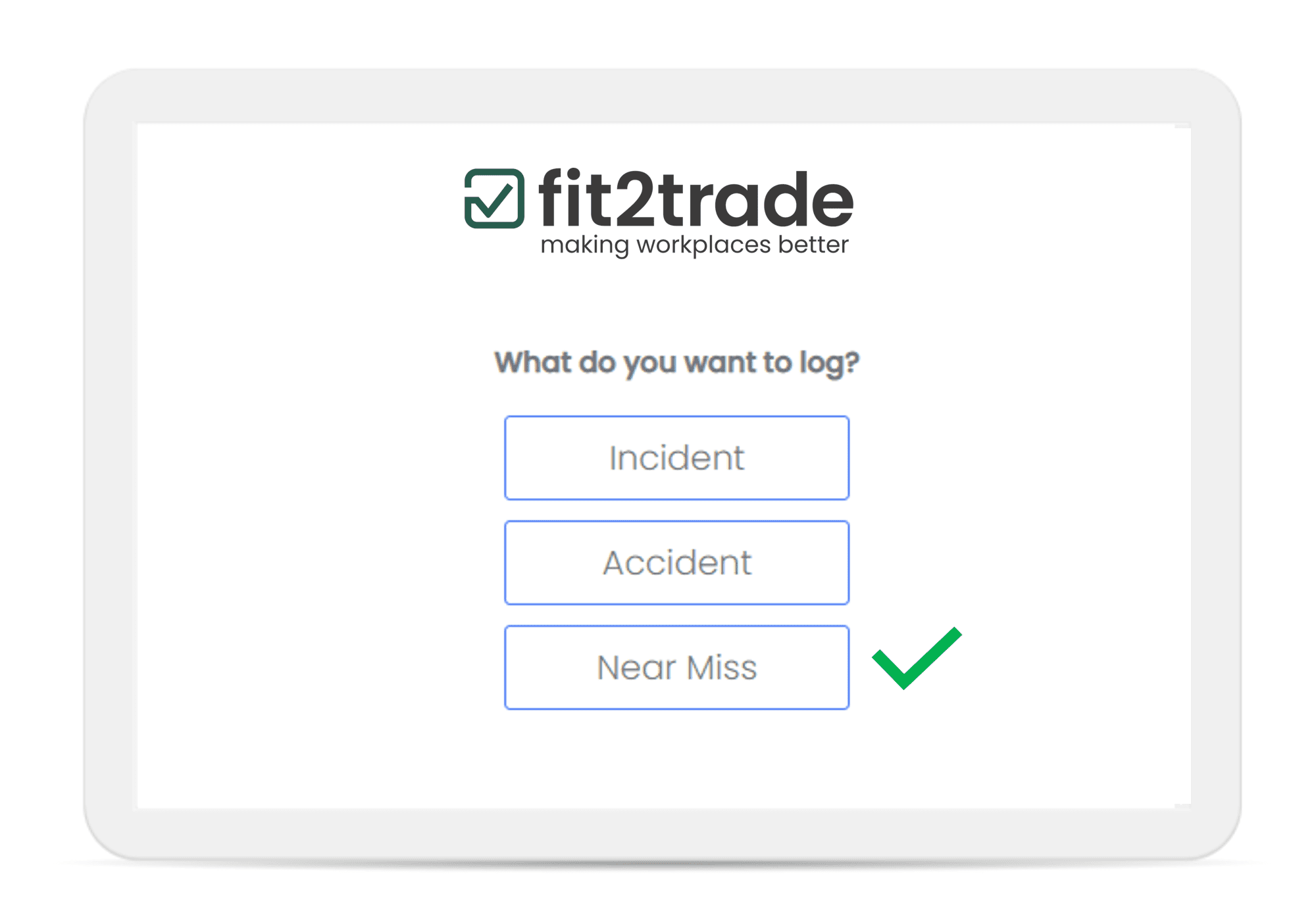Near-Miss Reporting Software
By capturing and analyzing near misses, we identify potential hazards before they lead to accidents, enabling timely intervention and preventive measures.

Prevent Accidents Before They Happen with Near Miss Reporting
Our Near Miss Reporting software is designed to capture, analyze, and utilize near-miss incidents, turning them into actionable data to enhance workplace safety. Prevent accidents by addressing potential hazards before they become real problems.
Hazards, Near Misses, Incidents and Accidents defined
Hazard
A risk that hasn’t yet materialized into a near miss or incident.
Near Miss
An event where an accident could have happened but didn’t.
Incident
Any event that disrupts normal operations or poses a safety risk.
Accident
An unplanned event that actually causes injury or damage.
A spilled drink on a floor; what is it?
Let’s use the scenario of a spilled drink on a floor and someone walking towards it to exemplify the definitions of hazard, near miss, incident, and accident:
Hazard:
The spilled drink on the floor represents a hazard. It’s a risk that hasn’t yet led to a near miss or an incident. The slippery surface poses a potential danger for anyone walking in that area, as they could slip and fall.
Near Miss:
A near miss occurs when an individual walking towards the spill narrowly avoids slipping. Perhaps they notice the spill at the last moment and manage to sidestep it, or they slip slightly but regain their balance without falling. In this case, an accident could have happened but didn’t, thanks to a fortunate turn of events or quick reaction.
Incident:
If the person notices the spill and has to stop abruptly, causing a minor disruption or drawing attention to the hazard, this could be considered an incident. It’s an event that disrupts normal operations – in this case, the person’s safe and uninterrupted passage through the area – and highlights a safety risk.
Accident:
An accident occurs if the person walking towards the spilled drink doesn’t notice it in time, slips, and falls, resulting in injury or even just spilling their belongings. This is an unplanned event that actually causes harm or damage.
What is a Near Miss?
A near miss, often referred to by the Health and Safety Executive (HSE) as an “incident that, although not resulting in injury or illness, bears the potential to do so”, encompasses a broad range of scenarios, including those termed “dangerous occurrences” as outlined in the Reporting of Injuries, Diseases and Dangerous Occurrences Regulations 2013 (RIDDOR). Notably, RIDDOR mandates the reporting of such near misses by organizations, underscoring their significance in workplace safety.
Expanding on this, the Occupational Safety and Health Administration (OSHA) characterizes a near miss as “an incident where no property was damaged and no personal injury sustained, yet given a slight shift in time or position, damage and injury could indeed have occurred.” Similarly, the World Health Organization (WHO) describes a near miss in the context of healthcare as an event that could have led to harm but did not, either by chance or through timely intervention.
In the same vein, the Health and Safety Authority (HSA) defines a near miss “as an unplanned event that did not result in injury, illness, or damage, but had the potential to do so”. For instance, envision a scenario where an employee narrowly avoids a fall due to an unnoticed spill on the floor. This exemplifies a typical near miss, highlighting the critical importance of vigilance and preventive measures in the workplace.
Within the framework of organizational safety protocols, it is essential to meticulously document and scrutinize the following elements:
- Unplanned events: Incidents that occur unexpectedly and are not part of the standard operating procedures.
- Near misses: Situations where an incident had the potential to cause harm or loss but fortunately did not.
- Awareness events: Occurrences that raise awareness about potential risks or vulnerabilities within the workplace.
- Adverse occurrences: Events that result in harm or loss, necessitating a thorough investigation and remedial action to prevent recurrence.
Near Miss vs. Hazards vs. Accidents
The terms ‘near misses,’ ‘hazards,’ and ‘accidents’ often get mingled up, yet they distinctly outline different aspects of workplace safety. Let’s demystify these terms, starting with a near miss.
Near Miss
A near miss in the workplace is essentially an incident where an individual comes perilously close to suffering an injury but, fortunately, avoids it.
Hazards
While hazards share common ground with near misses in that neither results in injury, they are inherently different. A hazard refers to a condition or practice that has the potential to cause accidents or near misses. It’s essentially a risk that hasn’t yet materialized into an incident.
For instance, an employee working at heights without protective headgear represents a hazard. Should that individual come close to falling but avoid injury, that scenario shifts from being a mere hazard to a near miss.
Accidents
Conversely, workplace accidents are events that culminate in physical injury, occasionally with grave consequences. These incidents necessitate thorough investigations to unearth their causes. Implementing robust safety measures and preventive strategies is crucial to diminish the likelihood of accidents and safeguard the wellbeing of everyone in the workplace.
Get compliance training that works.
fit2trade’s online compliance solutions make learning easy for employees and less work for HR, L&D and OH&S managers.
